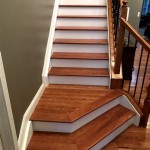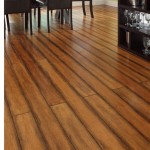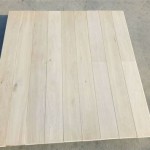Cork Flooring Underlayment Installation: Essential Aspects
Installing cork flooring underlayment is a crucial step in ensuring a comfortable, durable, and long-lasting floor. Here are the essential aspects to consider for a successful installation.
Choosing the Right Underlayment: Select underlayment specifically designed for cork flooring. Cork underlayments offer excellent sound insulation, thermal resistance, and moisture resistance, making them an ideal choice.
Preparing the Subfloor: The subfloor must be clean, dry, and level. Remove any existing flooring or debris, and repair any unevenness using a leveling compound or plywood.
Unrolling and Cutting the Underlayment: Unroll the underlayment across the subfloor, aligning it with the walls. Cut the underlayment to fit the room shape using a utility knife or sharp scissors.
Laying the Underlayment: Start from a corner of the room and lay the underlayment down, overlapping the seams by at least 2 inches. Use tape or adhesive to secure the seams for added stability.
Staggering the Joints: Stagger the joints between the underlayment sheets to prevent any weak points in the flooring. Offset the ends of the sheets by at least 6 inches.
Trimming the Edges: Trim any excess underlayment around the edges of the room using a utility knife or scissors, leaving a small gap of about 1/4 inch around the perimeter.
Acclimating the Cork Flooring: Before installing the cork flooring, allow it to acclimate to the room's temperature and humidity for 24-48 hours. This helps prevent expansion or contraction issues.
Installing the Cork Flooring: Follow the manufacturer's instructions for installing the cork flooring over the underlayment. Use appropriate adhesive or a floating floor system depending on the type of cork flooring chosen.
Benefits of Using Cork Flooring Underlayment: Cork flooring underlayment provides numerous benefits, including:
- Sound Insulation: Reduces noise from foot traffic and impact.
- Thermal Insulation: Improves thermal efficiency and reduces energy costs.
- Moisture Resistance: Protects against moisture damage, extending the life of the flooring.
- Increased Comfort: Provides a more comfortable and warm feel underfoot.
- Durability: Contributes to the longevity and stability of the cork flooring.
By following these essential aspects, you can ensure a successful cork flooring underlayment installation, leading to a beautiful, durable, and noise-reducing floor that you'll enjoy for years to come.

Cork Underlayment 1 2 12mm 102 Sq Ft Box Fund12 Icork Floor

Cork Tiles Or Floating Flooring

Complete Guide To Cork Flooring Installation Deerfoot Carpet

How To Install Cork Underlayment

Complete Guide To Cork Flooring Installation Deerfoot Carpet

Qep 200 Sq Ft 4 Wide X 50 Long 6mm Thick Natural Cork Sound Dampening Underlayment Roll 72000q The Home Depot

Acousticork R60 Cork Underlayment Rolls And S130 Underlay Planks Meets Building Code Inium Association Requirements Pick Up In Los Angeles

Qep 200 Sq Ft 4 Wide X 50 Long 6 Mm Thick Cork Plus Sound Dampening Underlayment Roll 72002 The Home Depot

Acoustic Insulation Installation Cork Flooring Icork Floor

How To Install Cork Flooring
Related Posts








